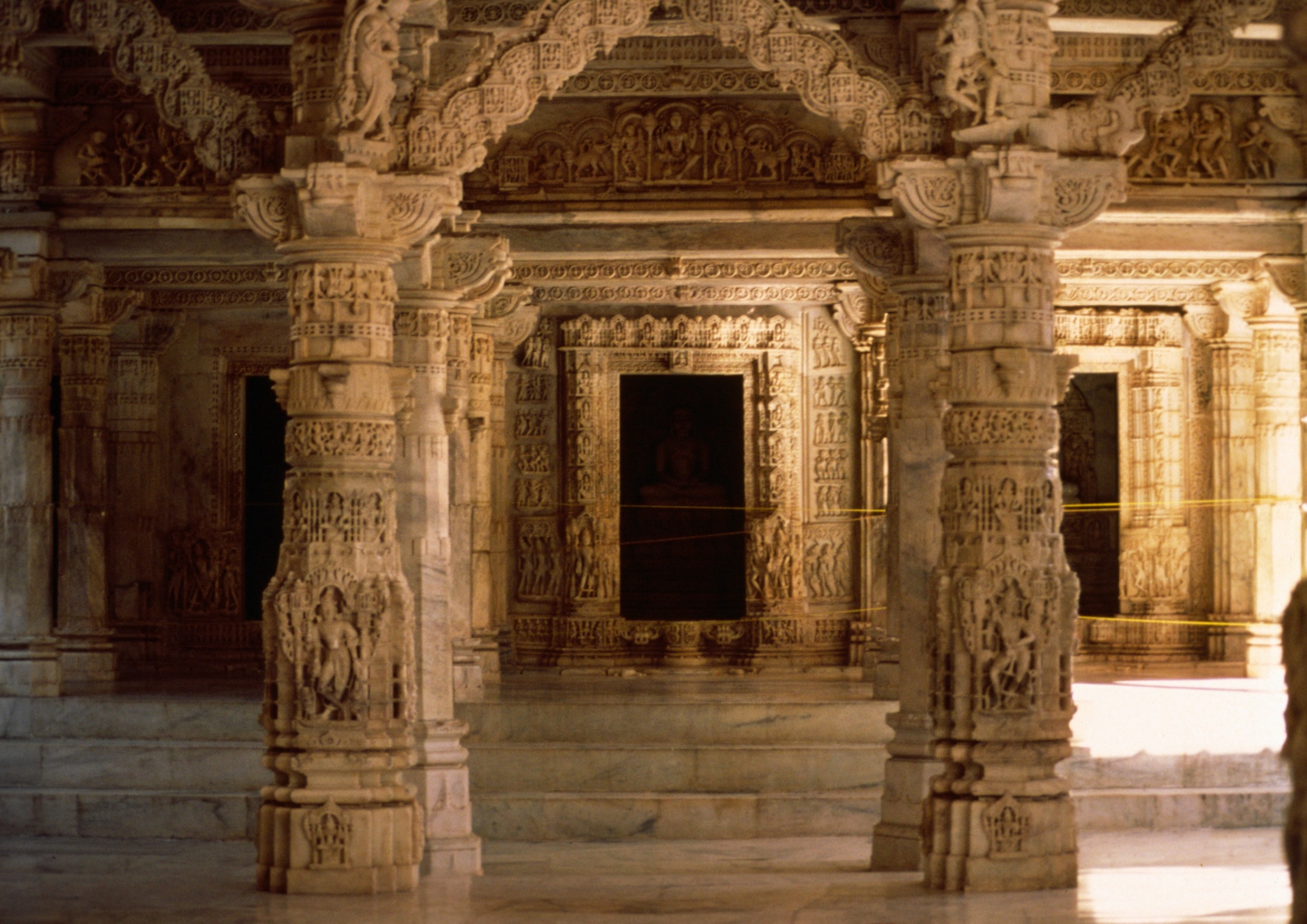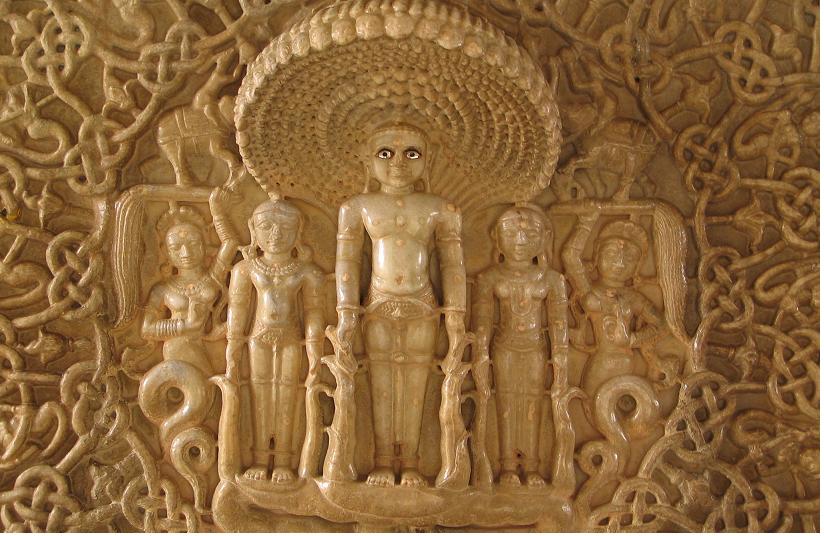The Jain Temple
Though the Jainas do not worship any transcendental God and are supposed to be atheistic, they have constructed magnificent temples and have evolved a complex set of rituals. Purifying the soul through meditation and asceticism, trying to put an end to all misery and attaining the highest liberation or nirvana is the aim of all human existence. This goal has been attained by the Tirthankaras. To meditate on this being and his qualities in order to advance on the path of purification of the soul and attainment of nirvana, Jainas visit temples where the images of such Tirthankaras are installed. Jainas do not worship Gods to seek their grace for material prosperity. Their temples are administered by foundations consisting of members known for their patronizing religious activity. Some Jaina temples belong to the Swetambara sect and others to the Digambaras. Some are patronized by a certain Jaina caste or regional group but all temples are open for worship to all members of the community. Large Jaina foundations have established and run Dharmashalas, rest houses, schools, libraries, colleges, research institutions, publishing houses, students, hostels, veterinary hospitals, etc. Many temples own precious jewellery, silver chariots and other expensive objects used for worship and rituals.
At the entrance the visitors have to remove their shoes. Often temples have their own source of water needed for daily bath of the image as well as for the bath of participants. The cult image is installed in the inner chamber of the temple. This chamber is secluded from the outer hall by a surrounding wall and a door which can. be rocked. In the outer hall, in front of the inner chamber, normally another small shrine is set up in which a small ritual image is placed. In front of this installation there are tables over which offerings like rice-grains, fruits, etc., are placed. The structure of the inner chamber is separated from the surrounding walls by empty space which is used as a circumbulatory path. Some large temples even have two worship halls and shrines, one for daily worship by men and another for women. In many Swetambara temples, musical instruments are kept for ritual use. One corner is reserved for preparation of sandalwood paste used in daily ritual. All Jainas put a sandal paste mark on their forehead on their visit to the temple. Apart from the main cult image, each Jaina temple has several smaller shrines of other Jinas in the surrounding chambers. On the pillars, walls, ceilings, etc., are often paintings of gods, goddesses and places of pilgrimage. In a corner there is usually a small shrine of Kshetrapala, a guardian deity who is also very popular in village cults.

Early in the morning the priest begins to clean and prepare the images for their daily bath. The lay worshippers come to the temple after taking a bath and wearing fresh clothes. Most of the regular visitors do not eat anything before coming to the temple. Some orthodox worshippers, when they are not able to visit the temple due to illness or some other reason, observe a full or a partial fast as repentance.
After removing the offerings of the previous day and after dusting the images, the priest washes them and puts fresh flowers and applies sandalwood paste. In the outer hall the lay-worshippers start the ritual by giving a bath to the image which is a kind of reminiscence of the post-birth illustration of Mahavira by Indra. While giving the bath the worshippers also sing devotional songs, apply sandalwood paste dots, offer flowers and rice-grains. The water and other liquids by which the image is bathed are collected in a large vessel which is placed in a corner. All visitors dip their fingers in this water and apply it to their forehead and eyes. Those worshippers, who do not take part in the bathing ritual, worship the image with folded palm, greet by kneeling in front of the image and offer rice-grains, cloves, almonds, flowers or fruits. Often, the visitors make from rice-grains the diagrams of swastika, nandyavarta, the moon and the dot of the sacred syllables Om and Hrim. In some Swetambara temples, some worshippers hold a lamp in front of the image or worship the reflection of the image in the mirror.
In the afternoon the temple is closed but occasionally there are special sermons by a monk or a nun. In the evening the temple opens again. In Digambara temples, the evening ritual consists of a simple prayer sung in front of lamps. In Swetambara temples, the image is decked with heaps of flowers or jewels or thin silver sheets. At close, the Drati ceremony takes place in which many lamps are lit and moved in front of the image accompanied by devotional songs.

